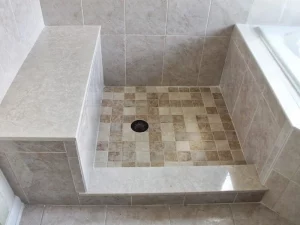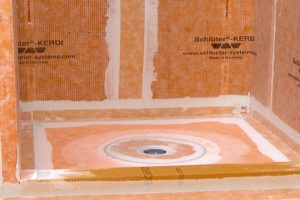How to Hang Drywall
If you’re in the process of renovating a home or just curious about the drywall process, you may have stumbled upon a video by Brad with Home Love Construction. In this video, Brad walks us through the process of installing and finishing drywall.
Firstly, Brad mentions that they’re renovating a 100-year-old home, and they’re currently in the process of installing half-inch drywall. Brad shows us the progress they’ve made so far, and the next step in the process is to install tape along the seams.
Brad explains that “paper joint tape,” which is actually a thick paper, is used to cover the seams between the sheets of drywall. This tape is then covered with joint compound, also known as drywall mud. Gary, who is in charge of the drywall in another room, applies a little bit of drywall mud to the seam first, then applies the tape and smooths it out with a drywall knife. He then applies the first coat of mud with a four-inch knife.
Brad explains that the reason they hang drywall horizontally rather than vertically is that the actual finishing work is what makes the magic happen. A level four or five finish requires an experienced person to finish the drywall. By hanging the drywall horizontally, the finisher can easily move around the room, rather than having to go up and down the wall to finish each seam.
Once the tape is in place, the next step is to fill in the screw holes. Brad advises using a small, four-inch knife to apply a small amount of mud over each screw hole. The mud will shrink as it dries, so two or three coats may be necessary to ensure that the screw holes are completely filled and flush with the surface of the drywall.
The second coat of mud is applied with an eight-inch knife, and the third coat, which is the finished coat, is applied with a 12-inch knife. Brad emphasizes the importance of using a wide knife for the finished coat to ensure that any bumps or imperfections are smoothed out.
Brad also shows us how to finish inside corners. Rather than using a flat piece of tape, Brad demonstrates how to fold the paper tape in half and tuck it into the corner, then apply mud over the tape.
It’s important to note that while the process may seem simple, finishing drywall to a professional standard takes a lot of skill and experience. Brad mentions that the cost of drywall can be higher than expected because of the amount of work that goes into finishing it.
Brad also stresses the importance of taking the time to properly prep the walls before installing the drywall. This includes installing furring strips every 24 inches and pressure-treated blocking around windows to provide a sturdy surface for the drywall to be attached to.
Finally, Brad reminds us to sand the finished surface once it’s dry to achieve a perfectly smooth finish. He advises using a sanding sponge, which is a more forgiving option than sandpaper, and to start with a coarse grit and work up to a fine grit.
In conclusion, drywall installation and finishing is a complex process that requires a lot of skill and experience to achieve a professional standard. By following Brad’s tips and techniques, you can get a better understanding of the process and achieve a perfect finish in your own home renovation projects.

 Previous Post
Previous Post Next Post
Next Post


